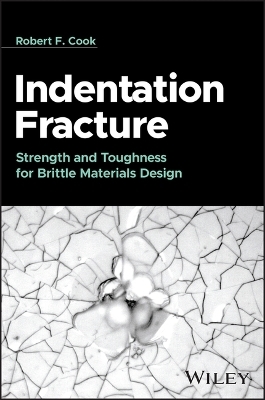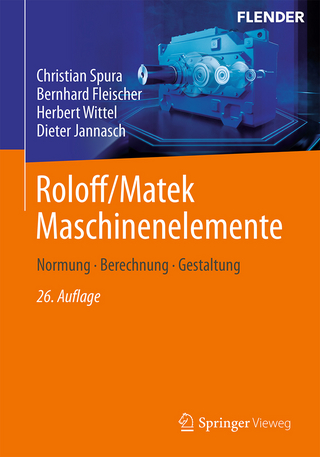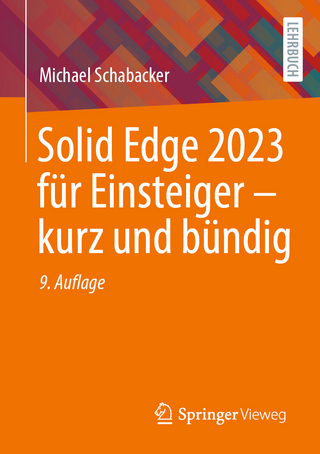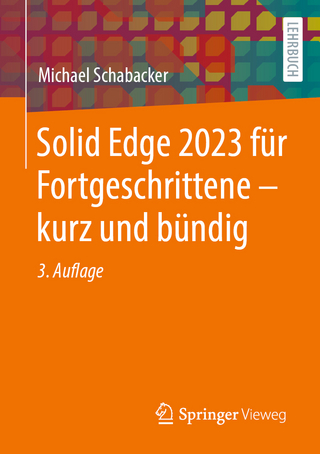
Indentation Fracture
Sybex Inc.,U.S. (Verlag)
978-1-394-20720-6 (ISBN)
- Noch nicht erschienen (ca. Mai 2025)
- Versandkostenfrei innerhalb Deutschlands
- Auch auf Rechnung
- Verfügbarkeit in der Filiale vor Ort prüfen
- Artikel merken
Indentation Fracture describes and illustrates advanced applications of indentation fracture in evaluating strength, toughness, and related properties of brittle materials. The book enables better design, manufacture, performance, and reliability of brittle materials as elements in structural components. Emphasizing the practical applications of indentation fracture techniques, especially those of indentation-strength, the book builds on a development of indentation fracture mechanics to demonstrate clear quantitative comparisons and rankings of material fracture behavior, including the behavior of toughened materials.
The book includes several case studies linking indentation fracture analyses and measurements to other phenomena including fragmentation cracking, edge chipping and dicing damage, scratching and the Mohs scale, and semiconductor grinding damage. Each case study highlights a different aspect of controlled flaw fracture measurements.
The book enables readers to increase the utilization of glasses, ceramics, semiconductors, and similar brittle materials in load-bearing applications by demonstrating experimental indentation techniques to better characterize fracture. A primary focus of the book is demonstration of controlled flaw indentation-strength measurements.
Written by an independent scientist with significant research contributions to the field, Indentation Fracture explores a range of topics including:
Brittle fracture fundamentals, discussing equilibrium fractures on uniform and localized loading leading to the Griffith and Roesler equations
Indentation strength variation, covering the effects of contact angle, spherical and flat punch contacts, and contacts in stressed and layered components
Toughened materials strength observations in alumina, silicon nitride, glass ceramics, ferroelastics, and zirconia
Strengths of silicon devices determined by wafer backgrinding, covering linear flaws in silicon, including single and multiple scratches, as well as linear, general, controlled, and grinding flaws
Indentation Fracture is an essential reference on the subject for engineers across disciplines, nanotechnologists, geophysicists, and environmental scientists, along with graduate students in materials science and related programs of study.
Robert F. Cook, PhD, is a former NIST Fellow at the National Institute of Standards and Technology (NIST), Gaithersburg, Maryland, USA, and an independent scientist. He was a 2008 recipient of a U.S. Department of Commerce Silver Medal for Scientific/Engineering Achievement and is the author of over 200 peer-reviewed publications, 16 patents, and the book Particle Strengths.
Preface xiii
Abbreviations and Symbols xv
1 Brittle Fracture Fundamentals 1
1.1 Brittle Components and Materials 1
1.1.1 Components 2
1.1.2 Materials 3
1.2 Transformations on Brittle Fracture 4
1.2.1 Observations 4
1.2.2 Energy Balance 6
1.3 Equilibrium Fracture on Uniform Loading 7
1.3.1 Work and Elastic Energy 7
1.3.2 Mechanical Energy and Surface Energy 8
1.3.3 The Griffith Equation 9
1.3.4 Configurational Forces: G and R 12
1.4 Equilibrium Fracture on Localized Loading 13
1.4.1 Mechanical Energy 13
1.4.2 The Roesler Equation 13
1.5 Stress-Intensity Factor and Toughness 17
1.6 Nonequilibrium Fracture 20
1.6.1 Unstable Adiabatic Fracture 20
1.6.2 Stable Isothermal Fracture 22
1.7 Fracture by Spatially Varying Loading 26
1.7.1 Stress-Intensity Factor for Fracture at an Inclusion 26
1.7.2 Crack Initiation 28
1.8 Summary 31
References 33
2 Indentation Cracking Behavior 37
2.1 Sharp Indentation of Brittle Materials 37
2.1.1 Observations: Morphology 37
2.1.2 Observations: Materials 41
2.1.3 Residual Stress Field Model 44
2.2 Indenter Shape Effects 47
2.3 Material Effects 53
2.4 Initiation 57
2.5 Summary and Discussion 61
References 63
3 Indentation Strengths: Invariant Toughness Materials 67
3.1 Indentation Strength of Brittle Materials 67
3.1.1 Historical Context 67
3.1.2 Experimental Methodology 68
3.2 Fracture Mechanics of Indentation Strength 70
3.2.1 Ideal Indentations 70
3.2.2 Precursor Crack Extension 74
3.2.3 Generalized Analysis 77
3.3 Indentation Strength Variations 79
3.3.1 Contact Angle 79
3.3.2 Spherical, Rounded, and Flat Punch Contacts 80
3.3.3 Lateral Cracked Contacts 87
3.3.4 Impacts 93
3.3.5 Contacts in Stressed and Layered Components 96
3.3.6 Uncracked Contacts 104
3.4 Indentation Strength Observations 108
3.4.1 Contact Angle Effects 108
3.4.2 Contact Radius Effects 110
3.4.3 Lateral Crack Effects 112
3.4.4 Impact Energy Effects 114
3.4.5 Surface Stress Effects 119
3.4.6 Subthreshold Effects 126
3.5 Summary and Discussion 131
References 132
4 Indentation Strengths: Toughened Materials 141
4.1 Introduction 141
4.2 Microstructural Toughening in Brittle Materials 142
4.2.1 Thermodynamics and the Energy Framework 142
4.2.2 Mechanics and the Stress Framework 143
4.2.3 Crack Wake Toughening: Overview 144
4.2.4 Crack Wake Toughening: Analysis 149
4.3 Toughened Materials Strength Analyses 150
4.4 Toughened Materials Strength Observations 153
4.4.1 Alumina 153
4.4.2 Silicon Nitride 161
4.4.3 Glass-Ceramics 163
4.4.4 Ferroelastics 165
4.4.5 Alumina Composites 168
4.4.6 Zirconia 172
4.4.7 Alumina Impact 177
4.5 Summary and Discussion 180
References 182
5 Indentation Strengths: Toughness Estimation 187
5.1 Introduction 187
5.2 Methods 188
5.2.1 Analysis 188
5.2.2 Experiment 190
5.3 Results 192
5.3.1 Relation to Conventional Method 192
5.3.2 Refinement of Modified Technique 193
5.3.3 Application of Modified Technique 196
5.4 Discussion 198
5.5 Conclusions 200
References 200
6 Indentation Strengths: Reactive Environments 203
6.1 Introduction 203
6.1.1 Background Concepts 203
6.1.2 Background Observations 205
6.2 Reactive Strength and Lifetime Analyses 210
6.2.1 Empirical Crack Velocity: Griffith Flaws 210
6.2.2 Empirical Crack Velocity: Indentation Flaws 212
6.2.3 Effect of Lateral Cracks and Microstructure 214
6.2.4 Thermally Activated Crack Velocity 216
6.3 Reactive Strengths Observations 220
6.3.1 Single Contact Loads 220
6.3.2 Multiple Contact Loads 221
6.3.3 Predictions 223
6.3.4 Surface Stress Effects 227
6.3.5 Probabilistic Methods 231
6.4 Summary and Discussion 233
References 236
7 Dynamic Fragmentation Patterns in Flexed Ceramic Disks 241
7.1 Introduction 241
7.2 Number of Fragments 243
7.3 Distribution of Fragment Sizes 248
7.4 Crack Branching Distances 251
7.5 Application Examples 254
7.5.1 Si Die Failure 255
7.5.2 Ceramic Microstructure Development 256
7.5.3 Branching Radius Variation 256
7.6 Conclusions 257
References 258
8 Edge Chipping at Small Scales and Strengths of Diced Components 263
8.1 Introduction 263
8.2 Sharp Contact Cracking at Edges 265
8.2.1 Contact Morphology 265
8.2.2 Crack Lengths 266
8.2.3 Chipping Threshold 269
8.3 Edge Chip Size Variation 270
8.4 Edge Chip Strength Variation 273
8.4.1 Strength Measurements 273
8.4.2 Strength Analysis and Prediction 274
8.5 Summary 277
References 278
9 Scratches and Lateral Cracking at Linear Sharp Contacts 279
9.1 Introduction 279
9.2 Analysis 282
9.2.1 Contact Deformation 283
9.2.2 Lateral Cracking 285
9.3 Results 288
9.3.1 Point Contacts 288
9.3.2 Dragged and Rolled Contacts 290
9.4 Mohs Scale Minerals 293
9.5 Summary and Discussion 298
References 300
10 Strengths of Silicon Devices Determined by Wafer Backgrinding 303
10.1 Introduction 303
10.1.1 Semiconductor Device Fabrication 303
10.1.2 Wafer Backgrinding and Die Strength 304
10.2 Linear Flaws in Si 306
10.2.1 Single Scratches 306
10.2.2 Multiple Striations 307
10.3 Strength of Si 309
10.3.1 Indentation Fracture Mechanics—Linear Contact Flaws 309
10.3.2 Indentation Fracture Mechanics—General Contact Flaws 313
10.3.3 Observations—Controlled Flaws 316
10.3.4 Observations—Grinding Flaws 318
10.4 Grinding Controlled Strength Model 322
10.4.1 Analysis 322
10.4.2 Results 323
10.5 Summary 327
References 328
11 Strength and Toughness of Cordierite Glass-Ceramic Composites 331
11.1 Introduction 331
11.2 Experimental Methods 332
11.2.1 Materials 332
11.2.2 Contact Properties 334
11.2.3 Toughness 338
11.2.4 Strength 338
11.3 Analysis Methods 339
11.3.1 Toughness Variation 339
11.3.2 Indentation Strength Variation 340
11.3.3 Intrinsic Strength Variation 340
11.4 Results 341
11.4.1 Toughness Measurements 341
11.4.2 Strength Measurements 343
11.5 Conclusions 345
References 345
Appendix 347
12 Crack Propagation in Toughened Materials 351
12.1 Introduction 351
12.2 Indentation Crack Extension Analyses 353
12.2.1 Residual Field Variation 353
12.2.2 Similar Driving and Resistance Fields 354
12.2.3 Dissimilar Driving and Resistance Fields 355
12.2.4 Piecewise Continuous Resistance Field 356
12.3 Crack Propagation Observations 359
12.3.1 Polycrystalline Alumina 359
12.3.2 Phase-Transforming Zirconia 361
12.3.3 Ion-Exchanged Glass 364
12.4 Summary 366
References 367
13 Summary and Future 369
13.1 Introduction 369
13.2 Materials Comparisons 370
13.2.1 Fracture in Inert Environments 370
13.2.2 Fracture in Reactive Environments: Master Maps 373
13.3 Future Topics 375
13.3.1 Thermal Shock 375
13.3.2 Concurrent Flaw Distributions 377
13.3.3 Indentation Measurements 378
References 379
Index 381
| Erscheint lt. Verlag | 14.5.2025 |
|---|---|
| Verlagsort | New York |
| Sprache | englisch |
| Themenwelt | Technik ► Maschinenbau |
| ISBN-10 | 1-394-20720-4 / 1394207204 |
| ISBN-13 | 978-1-394-20720-6 / 9781394207206 |
| Zustand | Neuware |
| Informationen gemäß Produktsicherheitsverordnung (GPSR) | |
| Haben Sie eine Frage zum Produkt? |
aus dem Bereich


